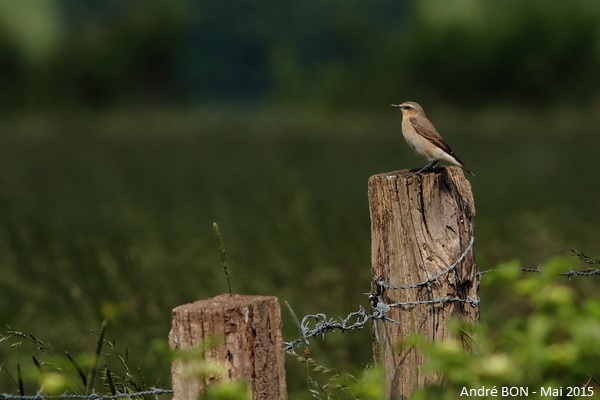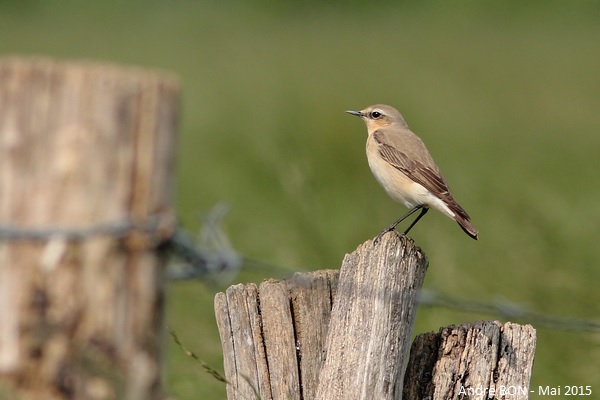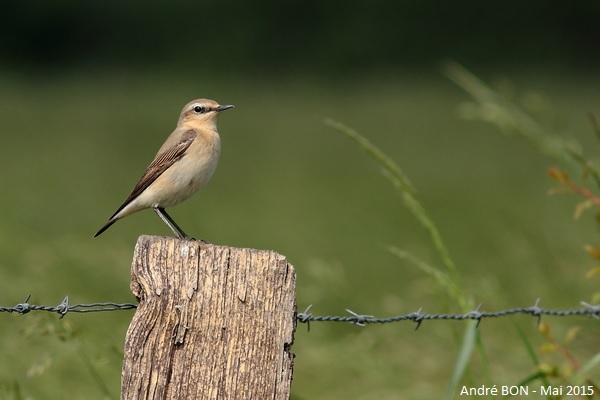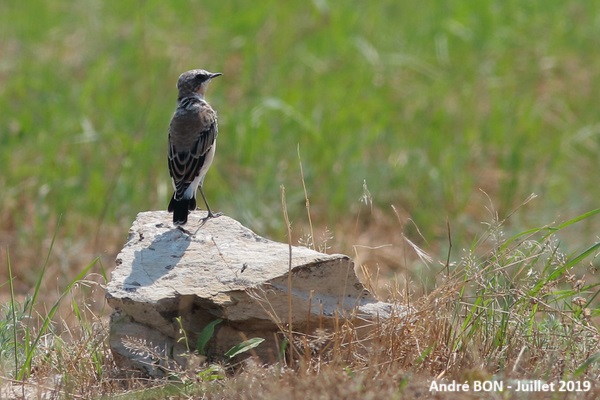



| Northern Wheatear (Oenanthe oenanthe (Linnaeus, 1758)) |




|
|
Scientific name: Oenanthe oenanthe (Linnaeus, 1758) Common name: Northern Wheatear French name: Traquet motteux Order: Passeriformes Family: Muscicapidae Size: Body size: 14.5 to 16 cm; Weight: 17 to 30 g; Wingspan: 26 to 32 cm. Habitat: Open and rocky habitats, in mountains and at lower altitudes, wastelands, embankments, etc. Food: Insects, spiders, millipedes, slugs and small molluscs but also numerous berries in autumn. Nesting: The nests are built in various places, in rock crevices, pebble heaps, rabbit holes, etc. There are 5 or 6 eggs per clutch and juveniles leave the nest a few days before being able to fly. Migration: All Northern Wheatears migrate to Africa in winter. Birds on the north-eastern coast of North America cross the Atlantic ocean before flying southwards to Africa. Birds of the north-western coast of North America cross the Bering Strait and travel up to 15000 km to reach Africa, crossing Siberia and the Arabian Peninsula. Geographic area: Birds of the Oenanthe oenanthe oenanthe subspecies breed in northern Europe and northern Asia and also in Alaska and on the north-western coast of North America. They winter in North Africa or Central Africa. Birds of the Oenanthe oenanthe leucorhoa subspecies breed in the north-western regions of Canada, in Greenland and in Iceland. They winter in western Africa. Birds of the Oenanthe oenanthe libanotica subspecies breed in Spain, in south-eastern Europe, in the Middle East and in northern China. They winter in tropical Africa. Birds of the Oenanthe oenanthe seebohmi subspecies breed in north-western Africa. They winter in western Africa. |
Male Northern Wheatears in nuptial plumage have black wings and tail with also a black mask on the eyes. The upper side of the body and the cap are light grey, the rump is white and the under parts are yellowish white. There is a long white eyebrow. The tail feathers are white with a black tip and they are a good mean to identify birds in flight. Females have a less contrasted plumage. Black is replaced by brown and light grey is replaced by brownish grey. Males in internuptial plumage resemble females. |
| [To know more about the Northern Wheatear] [Next picture] [Top] |

|
Spring is a very nice season for bird watching in the Basse Vallée du Doubs. This is a appreciated stop for many migratory birds during their long trip to the northern countries. Today, I have flagged a new species on my list with the Northern Wheatear. |
| [To know more about the Northern Wheatear] [Next picture] [Previous picture] [Top] |

|
I am used to driving my car on a short circuit. I observe and take pictures with the window down. This Northern Wheatear was not very shy. |
| [To know more about the Northern Wheatear] [Next picture] [Previous picture] [Top] |

|
I am not skilled enough to tell if this one is a female or a male in internuptial plumage. |
| [To know more about the Northern Wheatear] [Previous picture] [Top] |

|
This is my first sighting of a male in breeding plumage. The encounter was very brief and the photo is not very good. I hope this is just the beginning. |